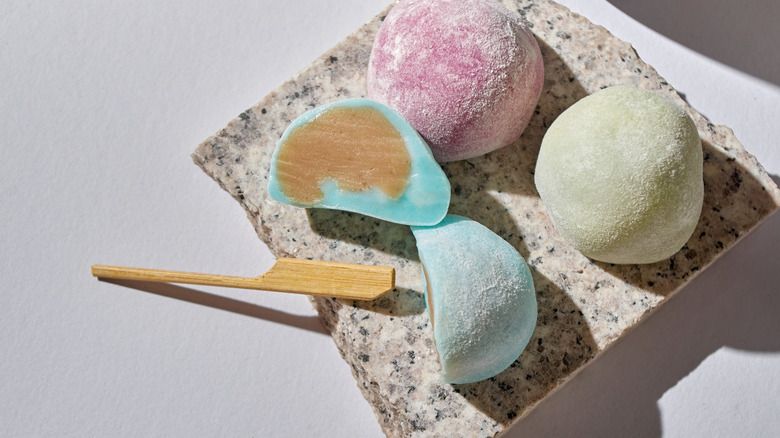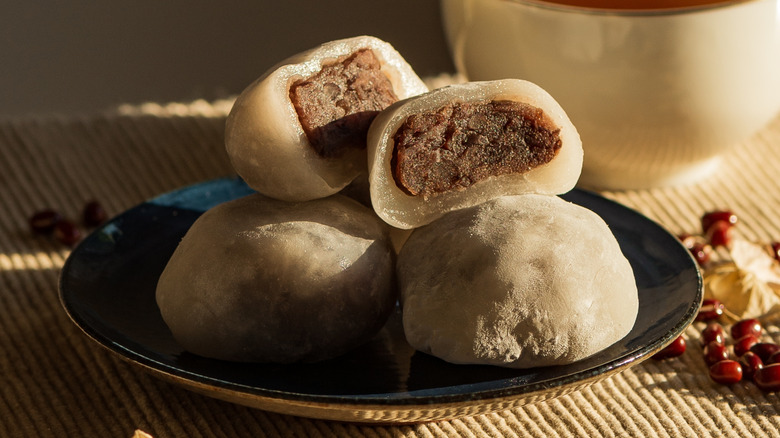What Exactly Is Mochi Made Of?
We've all seen them — mochi, the small, jelly-looking, but also somehow powdery-looking, balls in various colors. Whether you've tried it or not, there's no doubt this tiny, gummy food has taken the world by storm. But what exactly is it?
In short, mochi is made from rice. But it's a bit more complicated than that. Mochi is made from a specific type of glutinous rice called mochigome. It has a hint of sweetness, but it's most notable for its high starch content. This is what gives mochi its distinct sticky, chewy quality; though don't let the name fool you. Mochigome is glutinous rice, but it doesn't contain gluten.
There are two types of mochi, sweet and savory, and Sweet mochi is probably what most people are more familiar with. This type can come in many flavors and is marked by its soft pastel colors. Sweet mochi is often made with sticky rice with a higher sugar content, and can be come with a variety of different fillings. The other type, savory mochi, is usually cooked as balls or fried as buns. Mochi buns, popular in Korea, are often filled with meat or veggies. Toasted mochi cakes can also be added the kind of miso soup you might enjoy for breakfast — although this is a little unconventional, and you won't find mochi in a traditional Japanese breakfast spread.
History, uses, and flavors of mochi
Although mochi has recently become a popular snack worldwide, the dish actually dates back thousands of years, to Japan's Nara Period in the 8th century. Though a version of mochi existed before this, this is when it began to take the shape and flavor of the modern mochi we all recognize.
In these early days, mochi was eaten and used in specific ways for particular celebrations, but this tradition still continues today. For instance, mochi is commonly eaten on Hinamatsuri (Doll's Day) in Japan. Popular versions during this holiday include Hishi and Sakura mochi, both of which feature a color or colors significant to Doll's Day: Green, pink, yellow, or white. During the Japanese New Year celebration, arguably the most important holiday in the country, mochi takes on a sacred role. Named kagami mochi, this variety is displayed from around December 28 to January 11, then eaten when the festivities are over. Because the mochi becomes hard after such time, it is usually broken with a tool or your hand, then used in various dishes.
Whether in festivals or as a simple, mochi has endless flavor options; often, sweet mochi is flavored with mango, strawberry, coconut, or matcha. Fillings are quite common with sweet mochi too, whether it be a complementary flavor of ice cream (spicy chocolate ice cream with chocolate-flavored mochi), a bean paste (frequently anko, made from sweetened azuki beans), or custard. Both kinds, savory and sweet, are dusted with starch, giving the classic dusty-white look.

